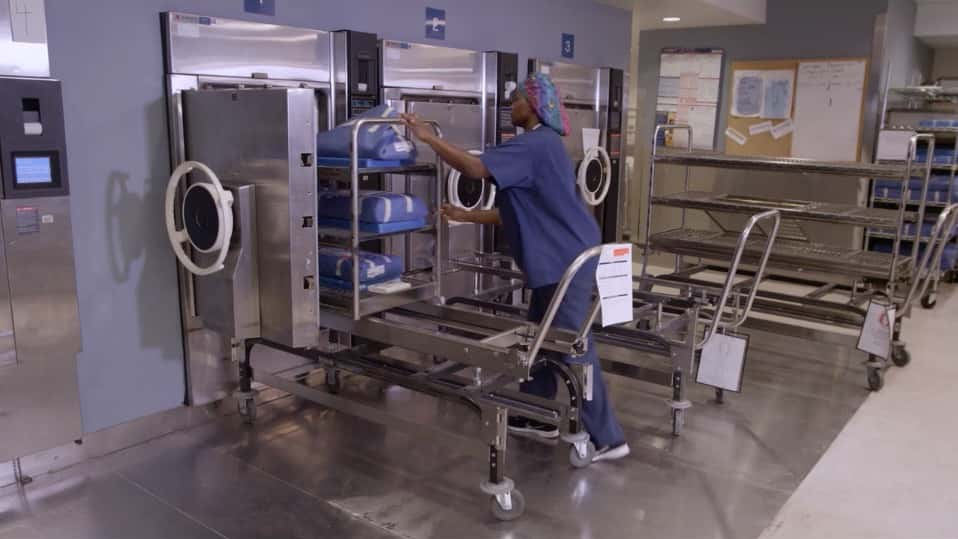Producing a training video or series of training videos can be a daunting task. Not only are you trying to communicate a lot of information in a short amount of time, but you’re trying to do so in a cost-effective way that justifies the expense of video production. Here are some tips to help your process and make the best possible videos:
- Decide whether company employees or paid actors will make the most sense for your video production needs. When demonstrating complicated techniques that must be done a certain way, you may be better off using your own veteran company staff than trying to explain to an actor how to do something. One concern many companies have is what to do if employees featured in the video leave the company, especially under bad circumstances. If you’re hugely concerned about that possibility, paid actors are another great way to go, but they do add expenses.
- Consider a hybrid approach to training videos involving both a paid actor spokesperson and employees demonstrating best practices. Your spokesperson can introduce each segment, explain what’s happening, and provide a sense of unity to all of your training videos, but your employees can do the actual demonstrations.
- Try to combine locations and segments where possible. In the interest of cost savings, brainstorm how you can shoot multiple segments in the same location. If you were producing a series of medical training videos, for instance, maybe you can re-use one location for CPR training, basic first aid, and defibrillator use. Not only will you save money on location costs, but also you won’t be paying for an entire cast and crew to move from location to location, eating up valuable company resources.
- Shoot all of your training videos at once. Logistically, planning a bunch of training videos to shoot at once can be challenging, but it will prove a lot less time consuming and costly than shooting them one by one. Not only can the production company negotiate better deals with cast and crew, but you may be able to negotiate a better bulk discount simply because of the volume of work required.
- Have scripts ready to go and easily digestible. Using existing training manual texts where available should make writing scripts much easier. To make the task seem more manageable, break up your training video needs into smaller segments. Focus on what is essential to communicate to your employees. Alongside your scripts, write notes about what materials need to be available for the segment, where it should be shot, and other important details. A production company won’t know your business like you do, so the more detail you include, the easier and cheaper it will make pre-production and production.
- Decide whether you need additional help. If you need script consultation and want to inject some humor into the proceedings or just some extra wit, don’t hesitate to make sure the production company can provide the professional assistance you need. If high-end training videos are important to your company messaging, you may want to budget for a makeup artist, higher end cinema tools, and additional time for lighting and rehearsals.
- Re-use materials where possible to save costs. If one video demonstration works in several training videos, don’t reinvent the wheel; go ahead and reuse it! If you have 10 training videos, you don’t necessarily need 10 music tracks. Maybe you’re fine with just 2 or 3 different tracks reused depending on the video. If you want a custom motion graphic logo of your company, spread the cost over many training videos to gain maximum value out of it.
- Break up training video materials into smaller, easily digestible segments. Rather than have one 15-minute long training video, consider breaking up the content into 3-5 smaller videos. The cost shouldn’t be any greater for you, but the material will be more accessible to employees. You could even have the production company create both one longer video and break up the longer video into segments, which would cost barely anything extra but provide more versatility in your training video presentations.
- Make sure you send your best, most experienced employee or employees to the shoot. One of the most important and critical keys to great training video production is to make sure someone from your company oversees every shot on set. While the video production company may have a creative director on the shoot, nobody knows your business as well as you do. You want to make sure no mistakes are made on production because reshoots will be expensive and add unnecessary cost. The production company’s staff will be focused on technical details like lighting, camera angle, focus, and remaining on schedule. Your focus should be on accuracy of all demonstrations and best practices.
- Expect future updates and plan accordingly. Eventually, hopefully not until years down the road, you will want to update and refresh your training videos. If you make sure you have full backup of all of the video files, you can save a lot of money in the future by filming new segments and cutting them into previously finished videos. Filmed properly, your training videos should last many years without a need to completely redo them. Small tweaks a few years down the road, though, can be relatively inexpensive and provide needed updates when your practices change.

